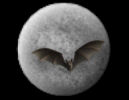
Blackholes Forum Message | |
| Forums: |
Atm ·
Astrophotography ·
Blackholes ·
Blackholes2 ·
CCD ·
Celestron ·
Domes ·
Education
Eyepieces · Meade · Misc. · God and Science · SETI · Software · UFO · XEphem |

 |
|
 |
||||
|
|
||||||
Be the first pioneers to continue the Astronomy Discussions at our new Astronomy meeting place... The Space and Astronomy Agora |
| Particle/Wave Duality
Forum List | Follow Ups | Post Message | Back to Thread Topics | In Response To Posted by Richard Ruquist on November 6, 2004 22:41:31 UTC |
Electrons behave as both particles and waves regardless of velocity. My conclusion from the fact that a single electron still has an interference pattern, is that until they interact with a detector and collapse, they are waves- even a single electron. So a single electron in its wave form (pardon the pun) will pass through both slits.
|
|
| Additional Information |
|---|
| About Astronomy Net | Advertise on Astronomy Net | Contact & Comments | Privacy Policy |
|
Unless otherwise specified, web site content Copyright 1994-2025 John Huggins All Rights Reserved Forum posts are Copyright their authors as specified in the heading above the post. "dbHTML," "AstroGuide," "ASTRONOMY.NET" & "VA.NET" are trademarks of John Huggins |